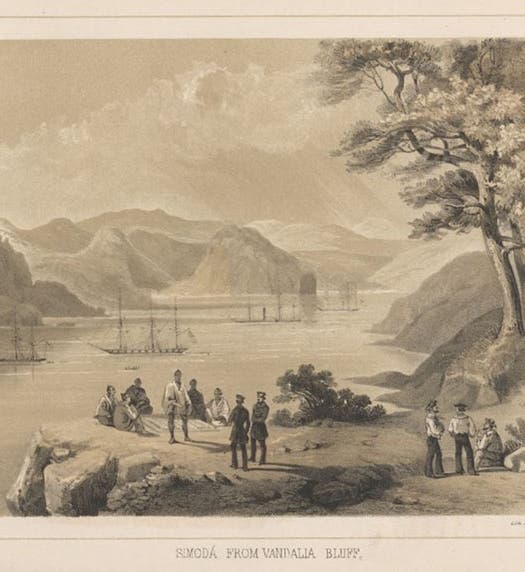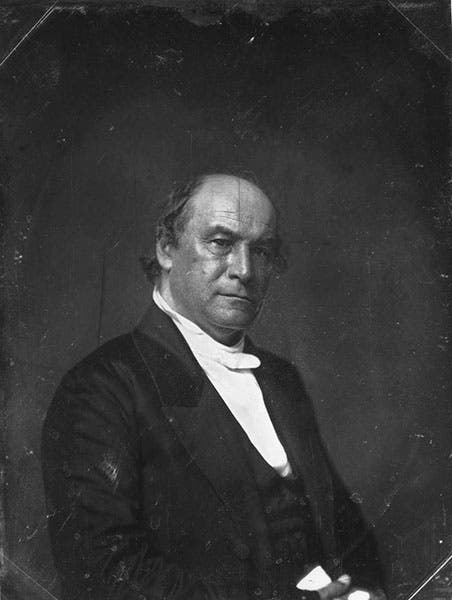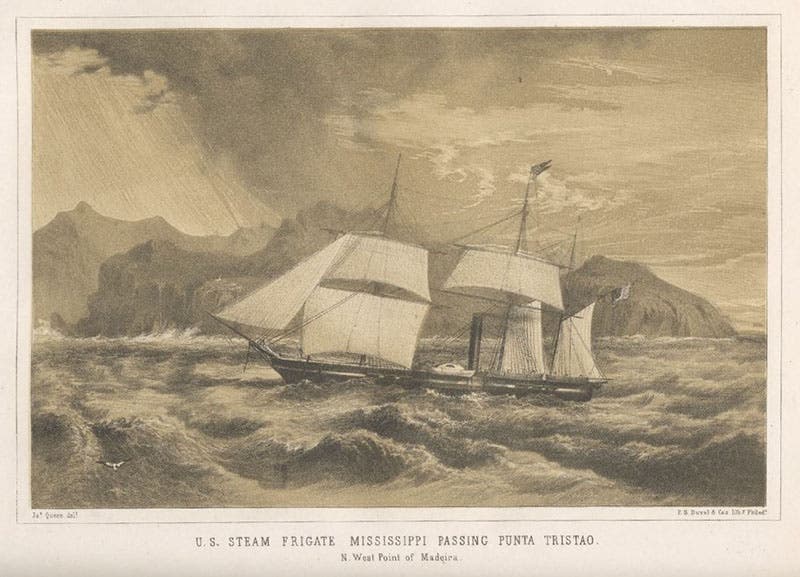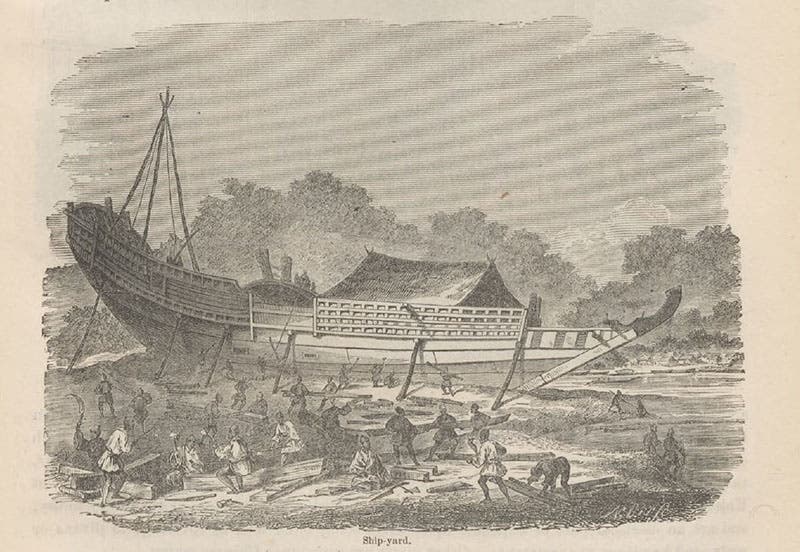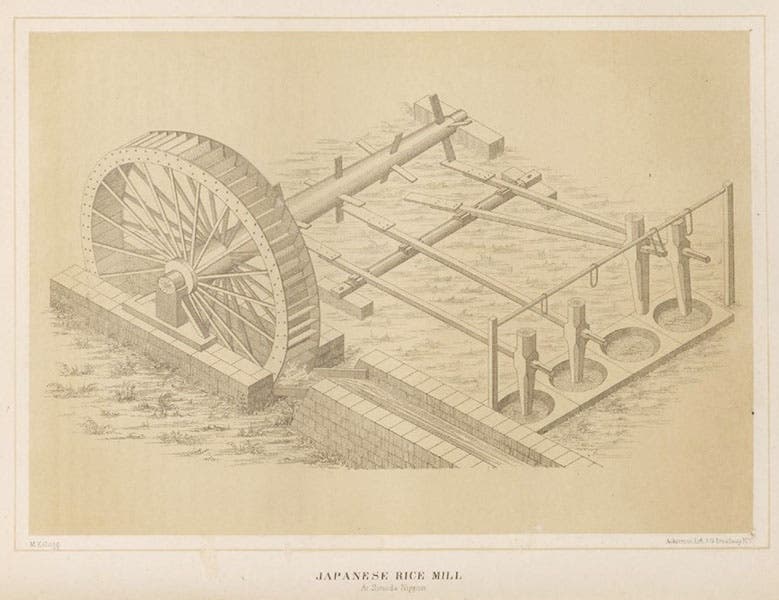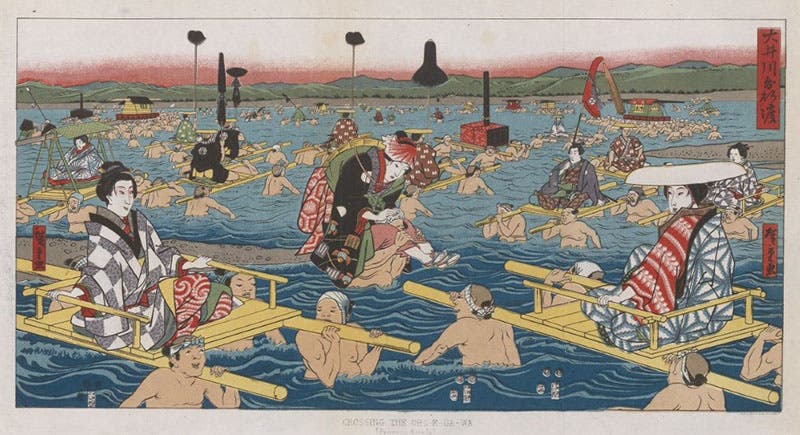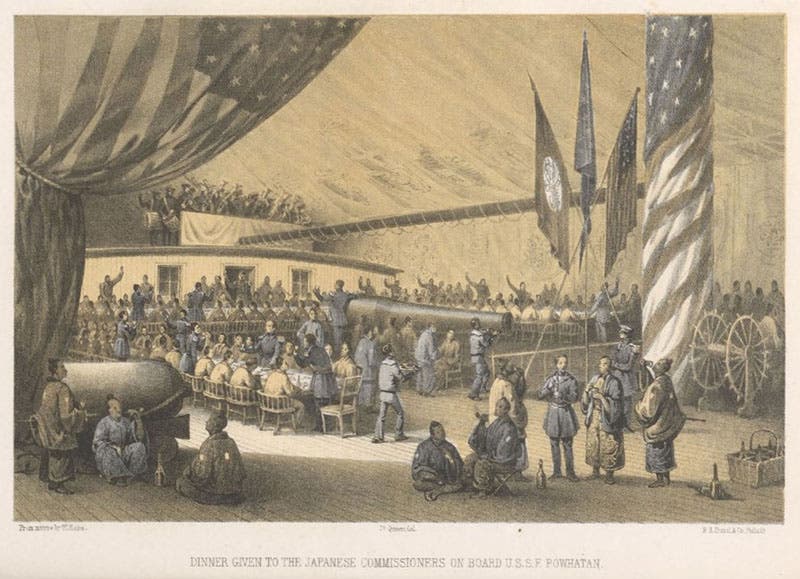Scientist of the Day - Francis L. Hawks
Francis Lister Hawks, an American Episcopal priest, preacher, and writer, was born June 10, 1798. In addition to being a spellbinding sermonizer (his portrait effuses the same kind of energy as those of William Jennings Bryan, whom he greatly resembles), Hawks also wrote, frequently and on many different subjects. He published a history of the Episcopal Church in America and also edited an American biographical encyclopedia. Hawks appears in a Scientist of the Day post because he agreed to compile a narrative of a voyage of exploration, much as John Hawkesworth agreed to write the narrative of Captain Cook's first voyage of 1769. The difference is that Cook resented the implication that he could not write his own narrative, which was not the case here.
In 1852, Commodore Matthew Perry was sent by the U.S. government with a squadron of ships to convince Japan to open up trade with the west. His mission was a success. In thanks, the U.S. government gave Perry a generous grant to write up the narrative of the expedition, and Perry promptly hired Hawks to do the job. He turned over all his logs and diaries and those of his officers to Hawks, and Hawks turned those entries into a readable narrative, and so quickly that it was published in 1856, as: Narrative of the Expedition of an American Squadron to the China Seas and Japan, Performed in the Years 1852, 1853, and 1854, under the Command of Commodore M. C. Perry. The complete work has three volumes; the account that Hawks put together comprises volume 1, and he had no role in the other two volumes, which are mostly specialist reports. So today we feature only images from the first volume, Hawks’ volume.
One of the nice things about U.S. government publications in the 1850s is that no expense was spared in the illustrations department. This was true in the publication of the Pacific Railroad Reports, which we have discussed many times in this series (see for example our posts on John Mix Stanley and Albert H. Campbell), and it was true with the three-volume publication of the Perry expedition. Volume one is rich in tinted lithographs – there are almost 100 of them. They depict the ships of the U.S. squadron, from a distance (first image), and closer up (fourth image); Japanese ships, in section, in full view, and in the process of construction (fifth image, below); and such events as a state dinner aboard the steam frigate Powatan (eighth image, below). There are even two copies of colored Japanese woodblock prints that must have really impressed Hawks; they are reproduced in the book as full-blown chromolithographs, a brand-new process of color printing. We show one of them, an energetic view of a river crossing for the well-to-do (seventh image, below).
I do not know how Perry and Hawks managed to cross paths in the first place, although I suspect this is known to some scholars somewhere. What really surprises me is that Hawks was allowed to include his name as author. After all, he was essentially a ghostwriter, well-paid for his services, and in most cases his name would not appear anywhere in the volume. But there he is, right on the titlepage, and as a result he is listed in most Library classification schemes as the primary author, which is quite extraordinary.
An enormous number of copies of the Narrative were printed by order of Congress, so the work is not at all scarce. We have two copies in our Library, one rebound and in very good condition; the other not so good, but it does preserve the original binding of the House of Representatives. The images here are from copy one.
We wrote a post on Perry once, and included there some of the lithographs in volume 2, which are just as splendid as those in volume 1. You can access that post here.
Dr. William B. Ashworth, Jr., Consultant for the History of Science, Linda Hall Library and Associate Professor emeritus, Department of History, University of Missouri-Kansas City. Comments or corrections are welcome; please direct to ashworthw@umkc.edu.

